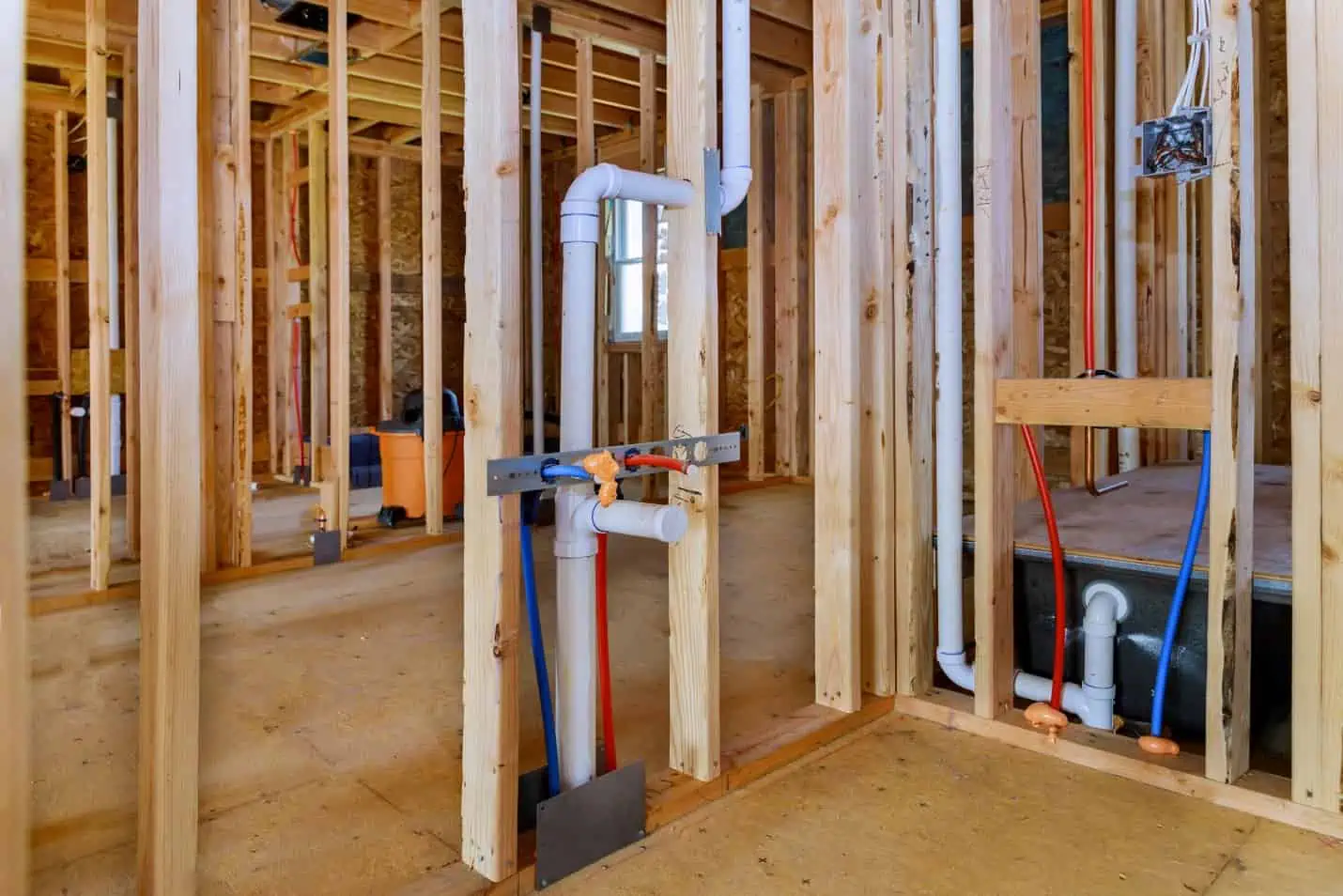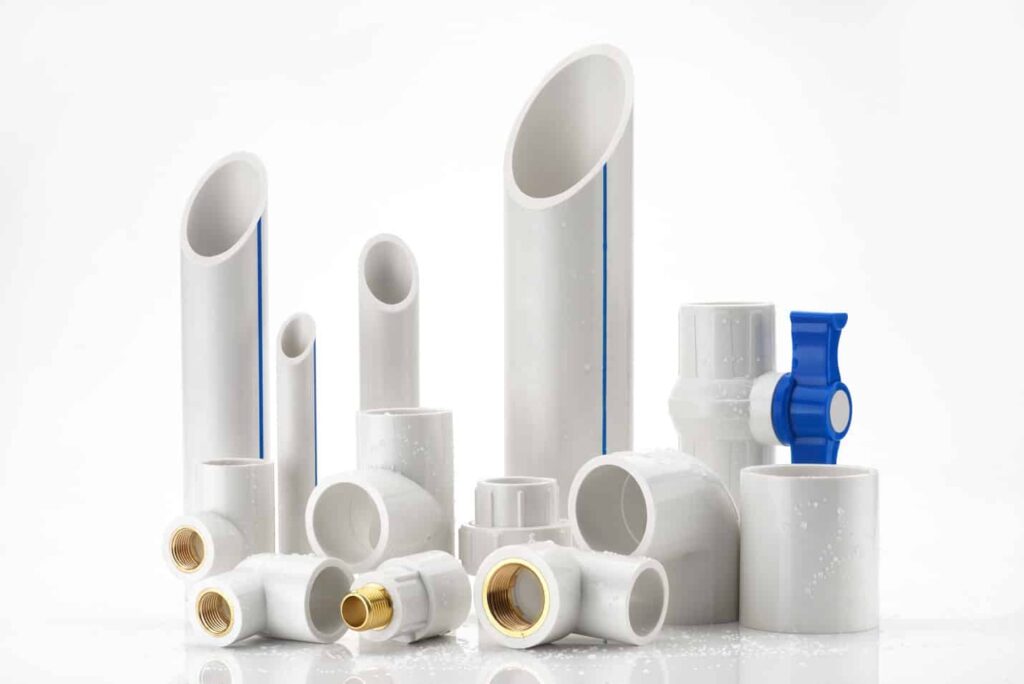The American Society for Testing and Materials (ASTM) develops various standards for a wide range of materials, products, systems, and services that serve as a basis for product testing, quality control, and product evaluation in different industries. One of which is the ASTM D2665— the ASTM standard for Poly(Vinyl Chloride) (PVC) plastic drain, waste, and vent (DWV) pipes and fittings.

This article tackles the content of ASTM D2665, its background, importance, as well as the dimensional, material, performance, and testing requirements for DWV plastic pipes and fittings outlined in the standard.
ASTM D2665 Background
ASTM D2665 was created through collaboration between stakeholders to establish a uniform set of guidelines used for the manufacture, performance, and testing of plastic pipes and fittings used for the drainage and venting of sewage and other liquid wastes in residential, commercial, and industrial buildings. The standard covers the dimensions, materials, performance, and testing of plastic pipes and fittings, and is used by manufacturers, engineers, contractors, and inspectors to ensure the quality, safety, reliability, and performance of DWV systems.
First published in the 1970s, it has since been revised several times to keep up with advancements in plastic piping technology. The standard is reviewed and updated regularly to make sure it remains relevant and current.

Elevate Your Engineering With Excel
Advance in Excel with engineering-focused training that equips you with the skills to streamline projects and accelerate your career.
Poly(Vinyl Chloride) Application in DWV Systems
Before learning about the ASTM D2665 guidelines in detail, it is important to know about the properties of PVC and why it is such a suitable material for DWV applications.
PVC is a thermoplastic polymer that consists of repeating vinyl chloride monomer units linked together to form a polymer chain. It is normally blended with additives, like plasticizers, stabilizers, lubricants, and fillers, to improve its processing and performance characteristics. Hence, its exact composition can vary depending on the desired properties and intended application.
This versatility in composition makes PVC an ideal material for a wide range of construction and industrial applications, including DWV systems.
One of the main reasons why PVC is used for DWV pipes and fittings is because of its durability and toughness. PVC can withstand harsh conditions in plumbing systems, including exposure to wastewater and corrosive substances.

In addition, it is lightweight and easy to handle, making it cost-effective in terms of installation and labor costs. Lastly, PVC is relatively cheap compared to other materials used in plumbing systems, such as metals.
ASTM D2665 Guidelines for PVC DWV Pipes and Fittings
ASTM D2665 outlines the material, dimensional, performance, testing, and product marking requirements for PVC pipes and fittings used in DWV systems as follows.
Material Requirements
The basic material used for pipe and fittings shall be virgin PVC compound that meets the minimum requirements of Class 12454 as defined in Specification D 1784. In case of rework, the manufacturer shall only use their own clean rework material solvent cement used to join pipe and fittings shall be in accordance to Specification D 2564.

In general, the material shall have no visible cracks, holes, and other defects, and the pipe shall be homogeneous in color, opacity, density, and other physical properties as practically as possible.
Dimensions of Plastic Pipes and Fittings
ASTM D2665 provides dimensional requirements for the outside diameter and wall thickness of PVC pipes, as well as for the entrance and bottom diameter, depth, wall thickness, and internal thread specifications of PVC fitting sockets. These are shown in the tables below.
Outside Diameters and Wall Thicknesses of PVC Pipes for DWV Systems
Entrance and Bottom Diameters, Depths, Wall Thicknesses, and Internal Thread Specifications of PVC Fitting Sockets for DWV Systems
ASTM D2665 requires pipes to be in either 10 or 20-ft lengths with an allowable tolerance of +0.5, −0 in, unless otherwise specified.
In addition to the dimensions of fittings specified in the table above, the fitting patterns should also conform to Specification D3311. For those with taper threads, the threads shall conform to Specification F1498.
Performance Requirements
ASTM D2665 has also provided specifications for performance requirements including pipe stiffness, minimum hydrostatic burst pressure, and impact resistance.
The required minimum pipe stiffness at 5 % deflection is shown in the table below:
Stiffness Requirements for PVC DWV Pipes
The pipe shall be able to withstand deflection of up to 60% of the nominal outside diameter without cracking, rupture, or other types of failure. In addition, each unassembled fitting shall be able to withstand a minimum load of 750 lbf/ft at the center without any failure.
The required minimum hydrostatic burst pressure of pipes at 73°F are shown in the table below. The calculated burst pressures assume a hoop stress of 6400 psi.
Minimum Hydrostatic Burst Pressure of PVC DWV Pipes at 73°F
For the fittings, the minimum burst pressure is set at 200 psi.
The required minimum impact resistance of pipes and fittings are shown in the table below:
Minimum Impact Resistance of PVC DWV Pipes and Fittings
Testing Procedures
In addition to all of the required parameters stated above, ASTM D2665 also outlines the procedure for testing the pipe and fitting specimens.
As per the standard, sufficient sample shall be randomly taken for testing from each lot. For pipes, this amounts to about 40 feet of pipe to make the tests prescribed. For fittings, the quantity necessary depends on the dimensions and classification of the fitting.
These specimens shall be conditioned prior to test at 73.4 ± 3.6°F and 50 ± 5% relative humidity. For regular quality control inspections, the samples shall be conditioned to the temperature and humidity conditions of the testing site for a minimum of one hour or until the samples reach the room temperature.
The tests shall be conducted in the standard laboratory atmosphere of 73.4 ± 3.6°F and 50 ± 5% relative humidity. For regular quality control inspections, the samples shall be tested at the temperature and humidity conditions of the testing site.
Product Marking and Quality Assurance
The pipe must be labeled with letters that are not smaller than 3/16 inches in height, using a contrasting color. The label must include the manufacturer’s name, the designation ASTM D 2665, the nominal pipe size, the symbol “PVC,” and the symbol “DWV,” spaced no more than 5 feet apart.
In addition, the fittings must be marked on the body or hub with the manufacturer’s name and the symbol “PVC.”
When the product is marked with the designation “D 2665,” the manufacturer certifies that the product was manufactured, inspected, sampled, and tested in accordance with this specification and has been determined to meet its requirements.
Aside from the mandatory requirements, ASTM D2665 also includes non-mandatory information about the storage and installation procedures for PVC plastic DWV piping. This can be found in its Appendix section.
